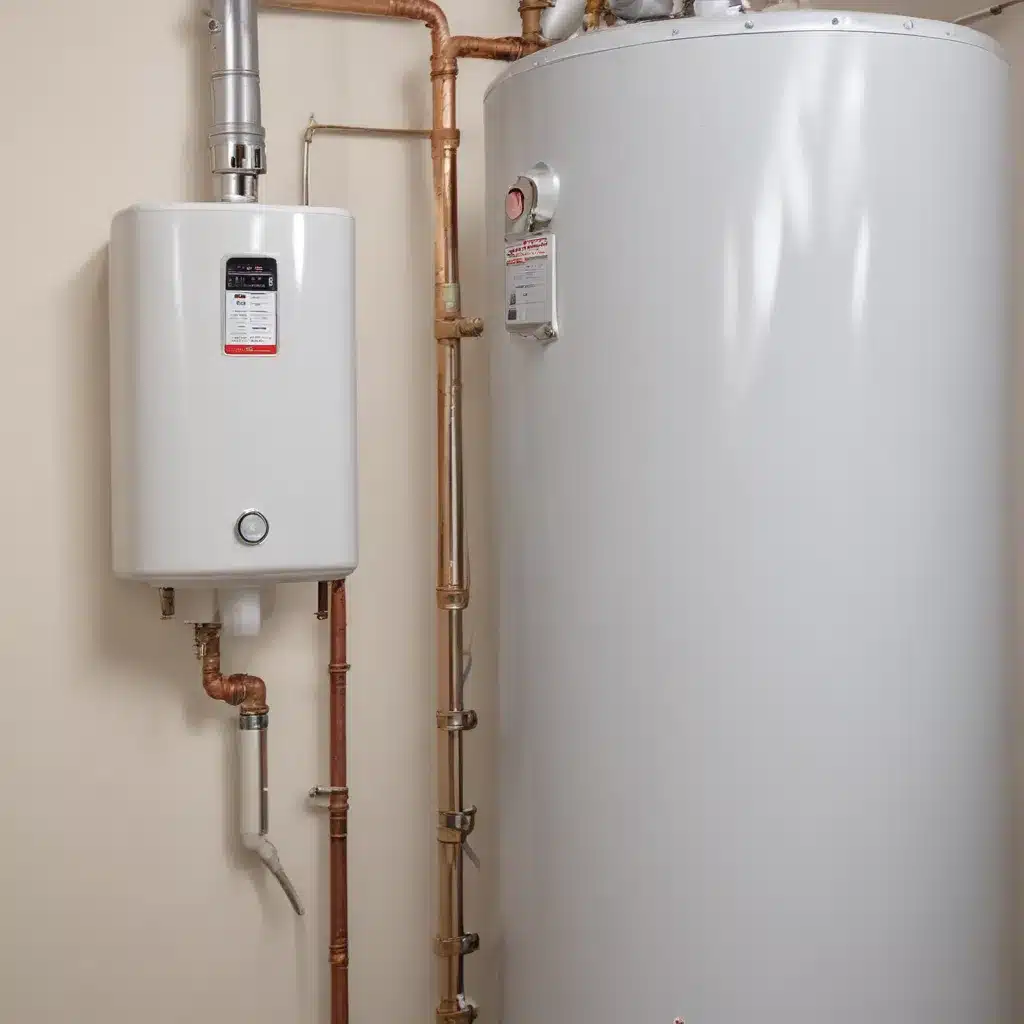
Water heater systems are essential components in modern homes and buildings, providing a reliable supply of hot water for a variety of everyday needs. In our 10 years of water heater experience… However, overlooking the crucial role of expansion tanks can lead to costly and potentially dangerous consequences. In this comprehensive guide, we’ll explore the importance of proper expansion tank sizing and placement, helping you avoid thermal expansion disasters and double-check that the long-term performance and safety of your water heater system.
Understanding Thermal Expansion
When water is heated, its volume expands, creating a phenomenon known as thermal expansion. This increase in volume can result in a significant rise in pressure within a closed-loop water heater system, potentially leading to the failure of critical components, such as pipes, fittings, and even the water heater itself.
To prevent these catastrophic outcomes, water heater systems are typically equipped with an expansion tank. This component acts as a cushion, providing a compressible air space that allows the expanding water to safely expand, without causing a dangerous buildup of pressure.
Expansion Tank Sizing Calculations
Properly sizing an expansion tank is crucial to ensuring its effectiveness in managing thermal expansion. The required tank size is determined by several factors, including:
- System Volume: The total volume of water in the closed-loop system, including the water heater, piping, and any other components.
- Maximum System Temperature: The highest temperature the water in the system is expected to reach, usually the maximum temperature setting of the water heater.
- Initial System Pressure: The static pressure in the system when the water is at its coldest temperature, typically around 60°F (15°C).
- Pressure Relief Valve Setting: The pressure at which the system’s pressure relief valve is designed to open and release excess pressure.
Using these variables, you can calculate the minimum required expansion tank size using the following formula:
Tank Volume = (System Volume × Expansion Coefficient) / (Maximum Pressure - Initial Pressure)
The expansion coefficient, which represents the percentage increase in water volume due to heating, can vary depending on the fluid used. For water, the expansion coefficient is typically around 3%, while for glycol-based antifreeze solutions, the coefficient may be as high as 4.5%.
It’s important to note that these calculations provide the minimum required tank size. For added safety and to reduce pressure fluctuations, it’s often recommended to use a slightly larger expansion tank than the calculated minimum.
Proper Expansion Tank Placement
The placement of the expansion tank is just as crucial as its size. Incorrect installation can compromise the tank’s ability to function as intended, leading to potential issues. Here are some best practices for expansion tank placement:
Pump-Away Configuration: Connect the expansion tank to the hydronic piping circuit near the inlet of the circulator. This “pump-away” configuration minimizes the pressure drop between the tank and the circulator, enhancing the system’s overall performance and protecting the circulator from cavitation.
Vertical Mounting: Install the expansion tank vertically, with the piping connection at the top. This orientation reduces stress on the tank’s connection and prevents air from becoming trapped on the water side of the tank when the system is first filled.
Isolation Valves: Include isolation valves around the expansion tank, allowing the tank to be easily serviced or replaced without the need to drain the entire system.
Clearance and Access: double-check that there is sufficient clearance around the expansion tank for easy access to the Schrader valve, which is used to adjust the air pressure in the tank.
Separation from Heat Sources: Avoid placing the expansion tank in close proximity to heat sources, such as the water heater or hot water piping. Heat transfer can increase the air pressure within the tank, potentially leading to pressure relief valve issues.
By following these guidelines for expansion tank sizing and placement, you can effectively manage thermal expansion, safeguarding your water heater system and preventing costly and potentially dangerous consequences.
Expansion Tank Maintenance and Troubleshooting
Proper maintenance and regular inspection of the expansion tank are essential to ensuring its long-term performance. This includes:
Air Pressure Verification: Regularly check the air pressure in the expansion tank to double-check that it matches the static pressure at the tank’s location. This prevents the tank’s diaphragm from being compressed by the cold water, which can compromise its ability to accommodate thermal expansion.
Diaphragm Inspection: Look for signs of diaphragm leaks or damage, such as the tank becoming “waterlogged” or water leaking from the Schrader valve. A compromised diaphragm will require tank replacement.
Corrosion Monitoring: Inspect the tank’s shell for any signs of corrosion, especially in open-loop systems or those using non-barrier piping materials that can introduce oxygen into the system.
By staying vigilant and addressing any issues promptly, you can extend the lifespan of your expansion tank and maintain the overall health of your water heater system.
Conclusion
Properly sizing and positioning an expansion tank is a critical aspect of water heater system design and maintenance. By understanding the principles of thermal expansion and following best practices for expansion tank installation, you can safeguard your water heater system from potentially devastating consequences. Remember to regularly maintain and monitor your expansion tank to double-check that its continued effectiveness in managing the dynamic pressures within your water heater system.
For more information and expert guidance on water heater systems, visit WaterHeaterPick.com – your comprehensive resource for all things related to water heaters, plumbing solutions, and home comfort.
Example: Addressing Leaks in Water Heaters 2023

